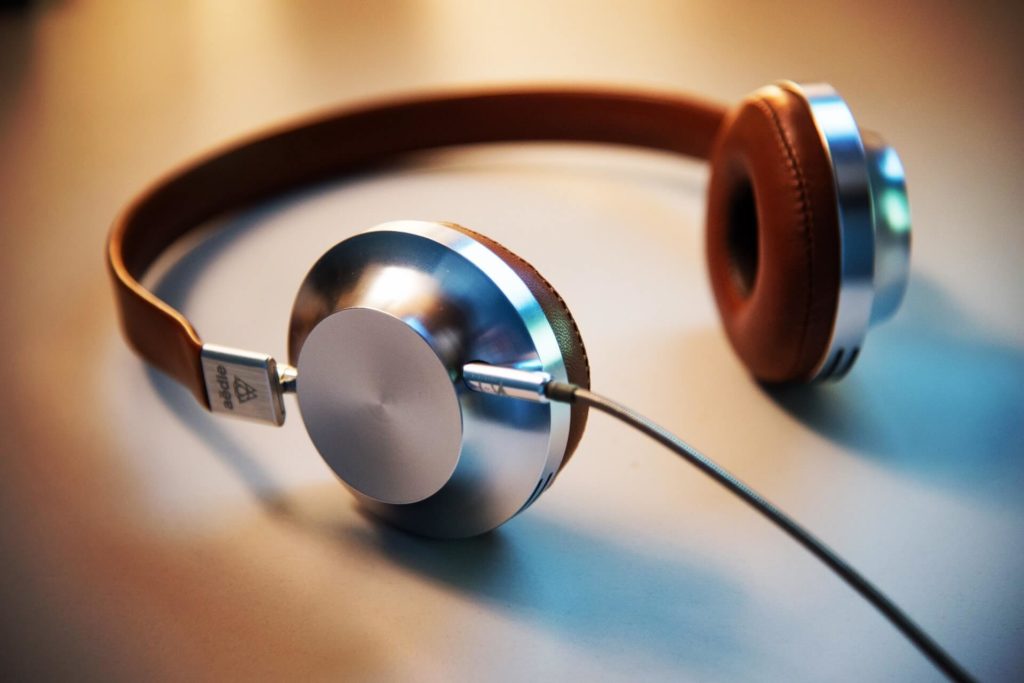Researching electronic devices will bombard you with metrics about their performance. While the terms and units can seem overwhelming at a glance, it’s not too hard to add the lingo to your own vocabulary for a better time shopping.
For those looking to purchase a new set of headphones, knowing about headphone sensitivity and impedance will help you select the right headphones for your intended usage.
Table of Contents
What Is Headphone Sensitivity and Sound Pressure Level?
A headphone’s sensitivity is a measurement of how much sound it produces for a specific sound pressure level. Manufacturers will usually list this in decibels per voltage in volts (dB/V) or decibels per power in milliWatts (dB/mW), but there is some variance in the sound pressure level used between them – even within the same brand.
For an example of headphone sensitivity comparison, the Sennheiser HD 450 BT has a listed sensitivity rating of 108 dB using a 1 kHz input. Looking at the HD 400 Pro, you can see a change in units to 110 dB, but the split between the two units makes the conversation take longer than can be explained in the scope of this article.
The sensitivity is still fairly close, even with those differences. It works best when you have multiple models from the same manufacturer, but it also helps to bring in other makers. Overall, they use somewhat similar headphone specs and testing requirements, but there are enough minor differences that it’s worth noting.
Suffice it to say that most modern headphones will aim for about a 100 dB maximum, although that can shift wildly between brands and models. Anything more than 10 or so outside of that range is likely to be particularly loud or quiet. A nearby helicopter in motion is around 100 dB, to give you an idea of how loud that is. Even the most basic headphones can drown out a fair amount of background noise, so be sure to use a reasonable listening volume for your environment and remember that the human ear can be damaged.
Is Higher or Lower Headphone Sensitivity Better?
Like many other headphone specifications and metrics, a high sensitivity rating is not necessarily better or worse than a pair of low sensitivity headphones. As the sensitivity is adjusted, the headphones have slightly different performance, but it’s ultimately not strongly correlated with better sound quality. Below you’ll find a list of the pros and cons of high-sensitivity headphones.
Pros of a Higher Sensitivity Rating
When the audio input device doesn’t provide much power, high sensitivity headphones take the weaker signal and turn it into a louder sound without cranking the volume knob to the max. If you’re struggling to hear the music from your portable device when you go out for a run, picking a higher sensitivity headphone will produce a louder volume from the same input.
Cons of a Higher Sensitivity Rating
Headphones with high maximum sensitivity will make unintentional sounds louder without additional filtering. These electrical artifacts will occasionally mar the listening experience with pops, static, and other sounds. A casual listener may not care, but audiophiles will balk at the atrocious abuse of the music’s rhythm.
As many smartphones will warn their users, listening to sounds at a high volume for too long can lead to hearing damage. The reason that your audio device may drop the volume if your headphones are unplugged for a moment is to avoid that potential hearing damage.
Even if you already have hearing loss and your perceived volume is lower, high volumes can exacerbate the underlying issues, causing symptoms like inner ear canal pain and tinnitus. Take the warnings seriously so you can continue to enjoy headphones.
Sensitivity and Frequency Response
Headphone frequency response isn’t immensely impacted by sensitivity. Just make sure to check the headphone specs for all of the metrics you care about.
What Is Headphone Impedance?

Modern headphones typically use electricity to carry, modify, and amplify soundwaves. You’ll have to go searching for sound-powered headphones if you don’t work on a Navy ship. Electrical engineering revolves around the formula I = V/R, where I is the current, V is the voltage, and R is electrical resistance.
Of particular importance here is the resistance, measured in Ohms, since the headphone impedance rating is the resistance of the headphone driver, or the part that turns the electrical signal into sound. Since the resistance is higher, it takes a higher voltage to produce the same current (I) as headphones with lower impedance.
Casual use headphones like ones you’d find in a convenience store because you lost yours on the way to work will be fine for most uses, but they also tend to drop sounds if their sensitivity is much below 32 Ohms. Headphones that use more than 100 Ohms will almost always require a headphone amplifier to properly produce a sound. Anything below that is fine for most amateur usage, although low impedance headphones can be helpful for someone taking the bus.
Do High Impedance Headphones Sound Better?
When used with a proper headphone amplifier and all other factors being equal, a pair of headphones with higher impedance can produce higher quality audio than their lower impedance counterparts. While not true across the board, some of the best headphones intended for music studios and other professional sound industries will utilize greater impedance to get to more details from the audio signal. You’ll likely be purchasing a pair of high impedance headphones if you venture down the audiophile path.
Pros and Cons of Higher Impedance Headphones
Again, impedance is one of those headphone metrics that will vary in performance between the potential use cases. Here’s a quick breakdown of the pros and cons.
Pros of High Impedance Headphones
High headphone impedance strongly correlates with better sound quality. A pair of headphones with a slightly lower impedance than another set may still win in a heads-up test, but it will need to have additional features to make up for the difference.
Cons of High Impedance Headphones
Since higher impedance headphones have higher resistance, it takes more voltage to produce the same current. Mobile devices frequently can’t provide the voltage, and the ones that do will drain their battery more quickly. Lower headphone impedance doesn’t have this option, which is why most cheap earbuds will have a low impedance.
Since they require more work in the manufacturing process plus their typical use by industry professionals, these headphones will cost more than low impedance ones. The difference is quite stark when you compare the headphone models available in the checkout line of a pharmacy with a pair of high impedance Bluetooth headphones with voice control.
For very high headphone impedance, headphone amplifiers are required to boost the voltage enough to reach the device’s sensitivity. Without the amplifier, you would likely have to crank the volume to the maximum to generate any sound at all. That’s an additional device to purchase, and another one to carry around if you’re using it while mobile.
What Headphone Sensitivity Do You Need?
Now that you know what is headphone sensitivity, you might be able to answer this one yourself. Unfortunately, it’s hard to give an exact answer about what level of sensitivity you need. It will depend on your hearing, the intended device, and your environment. It’s not so vital that you should use it as your primary metric for winnowing your headphone options,
If you only intend to listen to loud music within your home, the higher sensitivity might help with particularly low volumes from the sound source. You may have options you are not aware of to increase the source volume to allow a wider variety of headphones to function better with the device.
For those blasting amplified music through professional-quality headphones, a high sensitivity could distort the final product and be an active detriment to the listener. For professional musicians and artists, this can be an active detriment to the process, so lower sensitivity headphones work better.
Audiophiles will not want someone interfering with their enjoyment of music, so they probably have their own opinion on preferred sensitivity and impedance levels by now.
Only Your Ears Can Tell

While most shopping is done well online, there is nothing that compares to having a real pair of headphones to test with sample audio. Your speakers can’t mimic the exact sounds of those devices, so listening with your own ears will let you gauge their audio quality. With due diligence, great music, and the information above, here’s hoping that you can find the perfect set of headphones.

Keith Collins has been writing for over 15 years for various publications. He’s a lover of music, home theater, and excellent sound quality. His fondness for technology in addition to his non-stop curiosity fuels his writing ventures.